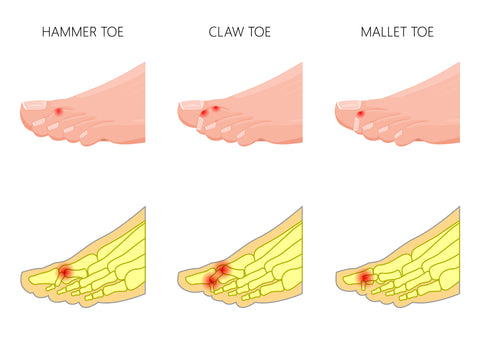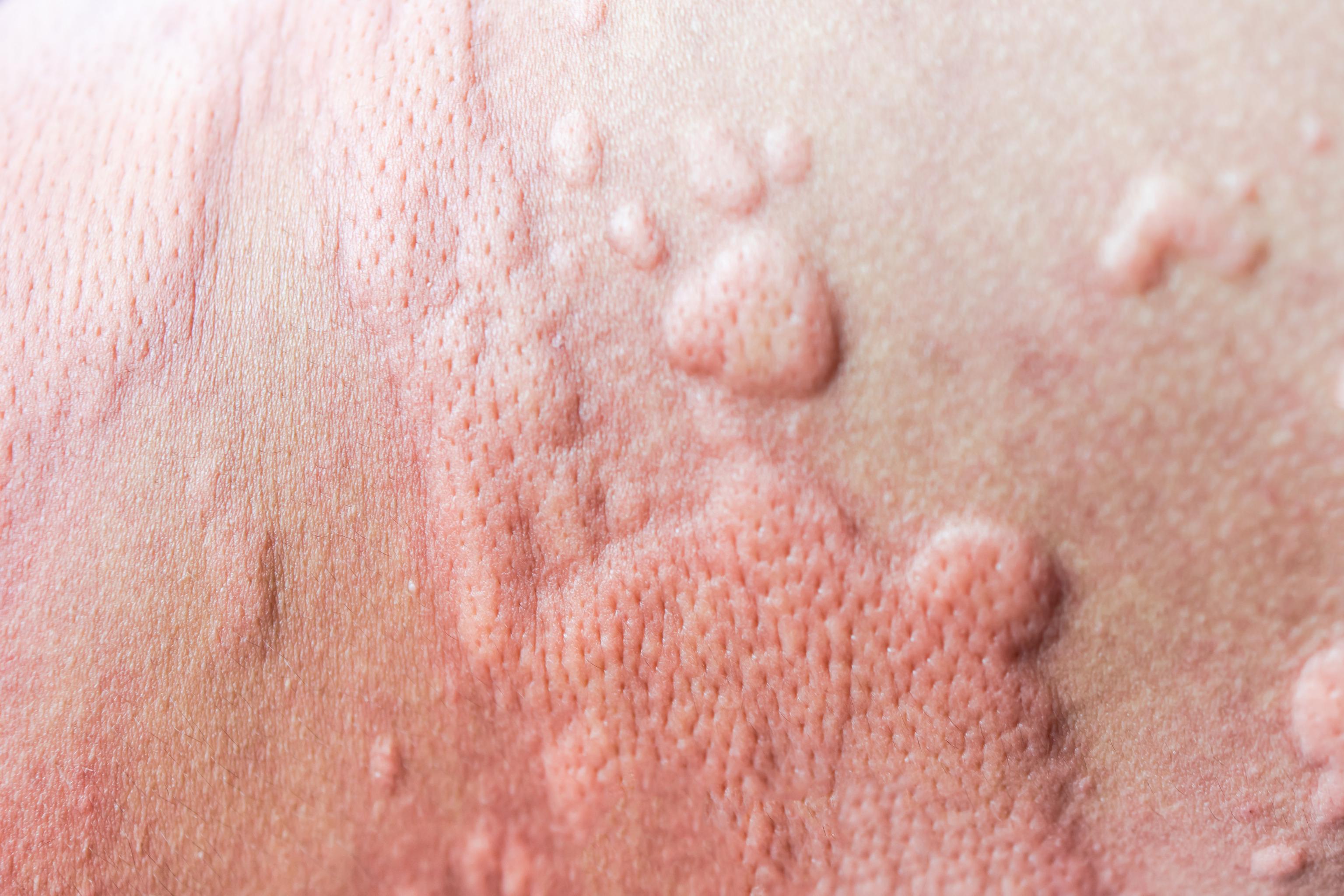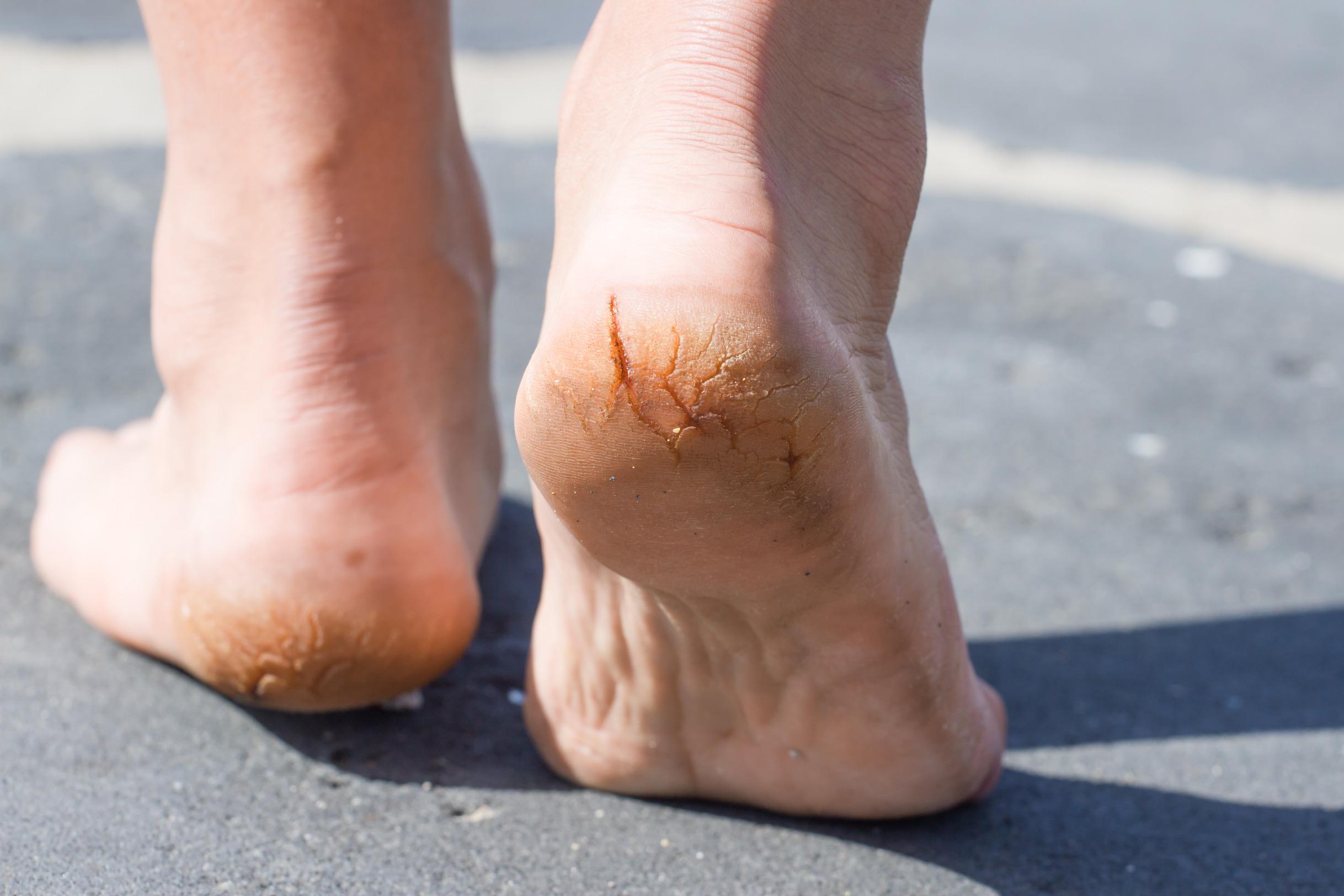Hammer Toe's and Hammer Toe Splint's: A Guide

What is a hammer toe splint and what does it do?
A hammer toe splint is a device used to treat hammer toe, a condition where the toe becomes bent and curled due to muscle imbalances. The splint helps straighten the toe by applying gentle pressure and holding it in the correct position, promoting proper alignment and relieving pain.
Hammer toe is not just a podiatric buzzword; it's a common foot ailment that affects millions of people globally. Placing pressure and discomfort on your toes can be more than just a nuisance; it can alter the way you walk, stand, and exercise, leading to a domino effect of negative impacts on your overall health. For orthopedic patients, fitness enthusiasts, and anyone else seeking to keep their foundation strong and agile, understanding hammer toe and the benefits of using a hammer toe orthotic such as reducing rubbing and friction, is essential knowledge. Some popular options for hammer toe orthotics include toe wraps, toe separator socks, gel toe separators, ball of foot cushions, hammer toe splints, and hammer toe crest pads.
What’s a Hammer Toe, Anyway?
In its simplest terms, a hammer toe is a deformity that occurs when the middle joint of the second, third, fourth toe, or fifth toes is bent in a downward position, looking similar to a hammer. This abnormal bend can be caused by a variety of factors, including wearing tight shoes, genetics, and arthritis. These conditions can lead to various issues, ranging from mild irritation to significant limitations in mobility due to friction and pressure from shoes.
The Anatomy of the Problem
The potential for each toe to become a "hammer toe" is usually determined by a combination of genetic factors, foot mechanics, and lifestyle choices. Genetics can influence the length and shape of your toes, which affects how they fit into shoes and interact with the ground. Footwear plays a critical role – narrowing, ill-fitting styles can compress the toes and gradually encourage the joint to bend. Even the act of walking can contribute, as some individuals have a biomechanical gait that places more pressure on certain areas of the foot, possibly leading to toe deformities over time.
The middle joint of the toe starts to buckle, while the end of the toe points upward, creating the "hammer" shape. Over time, the tendons in the toe can contract, further pulling the toe out of alignment.
Hammer Toe Culprits: Unveiling the Causes
Understanding the roots of hammer toe is the first step in finding relief. It’s a confluence of various factors that conspire to bend your digits out of shape.
The Role of Genetics
Your genetic makeup can dictate your foot structure and natural toe alignment. In some families, a propensity for developing hammer toe may be passed down through generations. This genetic predisposition doesn’t guarantee you'll have hammer toe, but it does mean extra vigilance is essential, especially when it comes to your footwear choices.
Footwear and Fitting Faux Pas
The culprits of footwear aren't just stilettos and pointy shoes; improperly fitted shoe sizes and especially tight, narrow toe boxes can push the toes together, causing them to bend at the middle joint. This can lead to conditions such as hammer toes, overlapping and crooked toes, and corns and calluses. Imagine squeezing your hand tightly into a small glove – it’s not just uncomfortable; it can create pressure points and misalign fingers. Your feet deserve the same consideration, which is why wearing toe separator socks can help alleviate pressure and discomfort caused by tight footwear.
Structural Misalignment
Your foot's intrinsic biomechanics also play a role. If you have flat feet or high arches, these conditions can influence how your weight is distributed across the foot, potentially leading to hammer toe. Additionally, muscle imbalances due to poor or irregular exercise can further compound the problem.
Unmasking the Symptoms and Diagnosis
As hammer toe progresses, the symptoms become unequivocal. Understanding what to look out for and how it's diagnosed can streamline your path to treatment.
Common Indications of Hammer Toe
Recognizing hammer toe’s trail of telltale signs is crucial for early intervention. You might observe corns or calluses forming on the top of the toe, the middle joint sticking out, or pain and discomfort, especially when attempting to wear shoes that used to be comfortable. In advanced cases, the toe’s bend might become fixed and inflexible, signaling a shift from a flexible to a rigid state.
Severe hammer toe cases may require surgery, including fracture repair, which is usually reserved for those experiencing severe pain, inability to engage in activities, and unresponsiveness to non-surgical interventions. Understanding the common indications of hammer toe, including potential fractures and pathology, is important for knowing when to consider surgery as a treatment option.
How is Hammer Toe Diagnosed?
When it comes to diagnosis, consulting with a podiatrist or orthopedic specialist is the best starting point. They'll conduct a physical examination of your feet, checking for visible signs of toe deformity. In some severe cases, X-rays may be ordered to get a clearer picture of the toe's alignment and the severity of the condition, particularly if surgery is being considered as a treatment option. For less severe cases, noninvasive solutions might be more effective.
Different Shades of Hammer Toe: Flexible, Rigid, and Mallet

Not all hammer toes are created equal. It's crucial to distinguish between the various types, as they require different approaches to treatment and management.
The Flexible Hammer Toe
In the initial stages, a hammer toe may still be flexible, meaning you can straighten the toe with your hand. At this point, the deformity is milder, and non-invasive treatment options can often provide significant relief and correction.
The Rigid Hammer Toe
As time goes by, a flexible hammer toe can progress to a rigid state, where the misalignment is fixed, with little or no ability to straighten it. This advanced form may cause severe pain and require more aggressive treatment, such as surgery.
Claw Toe
Claw toe is a foot deformity where the toes bend downward at the middle joint, resembling a claw shape. It typically affects the smaller toes, particularly the second, third, and fourth toes.
Mallet Toe
Mallet toe and hammer toe are often spoken about in the same breath, but they're distinct deformities. While hammer toe affects the middle joint, mallet toe impacts the joint closest to the toenail, causing the tip of the toe to bend downward.
Crafting a Treatment Plan for Hammer Toe
The bends and twists of hammer toe can be straightened – or at least managed – with a tailored treatment approach that suits the form of the deformity.
Non-surgical Solutions for Hammer Toe Rehabilitation
From orthotic devices and special footwear to physical therapy exercises and stretches, there’s a wealth of non-invasive options to try first like a hammer toe splint. These methods focus on relieving pain, correcting gait issues, and slowing down the progression of the deformity..
Nurturing Your Feet with Self-care and Preventive Measures
Taking care of your feet should be a daily ritual, not a last-resort measure. Self-care and proactive steps can support your treatment plan and potentially halt hammer toe's progress.
Your shoes are the foundation upon which foot health is built. Opt for styles with a wide toe box, ample arch support, and a low heel. There are even special orthopedic shoes crafted with your comfort and foot health in mind.
Incorporate simple exercises into your daily routine to stretch and strengthen the muscles in your feet. These exercises can help alleviate the discomfort of hammer toe and enhance flexibility.
Regular foot care, such as cutting toenails straight across and keeping corns and calluses in check, is par for the course. Pumicing your feet gently after a shower can further soften rough spots, and a moisturizing foot cream can help keep the skin supple.
The Weight of Early Intervention
Procrastination and hope are not a reliable treatment plan. Early intervention can make a remarkable difference in managing hammer toe and its effects.
Failing to act on the early signs of hammer toe can lead to a cascade of issues, from increased pain and discomfort to difficulty walking and performing daily activities. Inaction can also lead to other foot deformities, such as bunions, creating a dual assault on your mobility and comfort.
A skilled practitioner can guide you through the intricacies of hammer toe, providing personalized medical advice and treatment. Don't shy away from seeking help – it’s the first step to putting your best foot forward, quite literally.
The Road to Recovery and Management:
Post-treatment, the dedication to recovery and long-term management is a journey – not a destination.
What to Expect After Hammer Toe Treatment
Immediately after surgical correction or intensified non-surgical care, you might experience some discomfort and a period of restricted mobility. Your healthcare provider will outline a recovery plan, which may include physical therapy, a hammer toe splint, and a gradual return to regular activities. "Conservative methods like wider shoes, toe pads, and exercises are often first-line," says the American Academy of Orthopaedic Surgeons.
Even after successful treatment, the post-hammer toe phase requires vigilance and ongoing care. Regular appointments with your podiatrist are essential to monitor your progress and address any emerging issues promptly.
In Conclusion
Hammer toe might not be at the forefront of your thoughts when discussing foot health, but its prevalence and potential to affect your daily life mean it shouldn't be overlooked. With the right knowledge and proactive measures, you can face this common foot ailment with a firm stance and a flexible attitude. Remember, your feet are the unsung heroes of your physical activities, and they deserve the best care possible. In conclusion, a hammer toe splint is a game-changer for those struggling with toe joint issues. It provides added stability and support for the toe joint, with the added cushion a gel pad to alleviate pain and discomfort.


